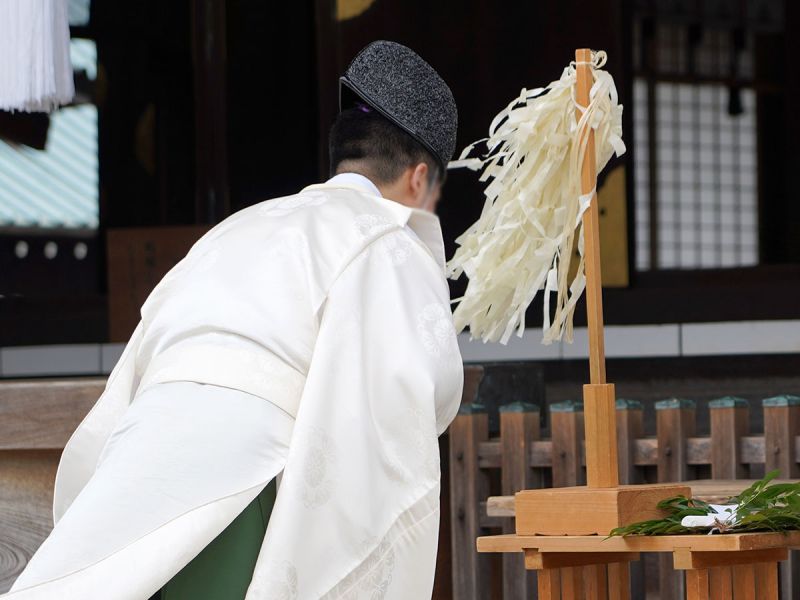
Table of Contents
ToggleIntroduction
Agarwood, also known as oud or aloeswood, is a highly prized aromatic resinous wood derived from the heartwood of Aquilaria trees. This rare and precious material forms when the tree becomes infected with a specific type of mold, prompting it to produce the fragrant resin as a defense mechanism. Due to its scarcity and the labor-intensive process required to harvest it, agarwood has been treasured for centuries across various cultures and religions.
Oudgo embodies the essence of this revered wood in its offerings, celebrating its rich history and cultural significance. This article delves into the diverse roles of agarwood in religion, art, and literature, exploring its cultural significance and symbolism. By understanding how agarwood is depicted in poetry, traditional and contemporary art, and its overarching cultural significance, we can appreciate its enduring influence on artistic expression and literary narratives worldwide.

Historical Significance of Agarwood
Origins and Early Uses
Agarwood has been a subject of fascination in ancient civilizations, prominently featured in historical texts and artworks. Early mentions of agarwood can be found in sacred scriptures and mythological stories, where it is often associated with divinity, purity, and luxury. In regions like China, India, and the Middle East, agarwood was not only a valuable commodity but also a significant element in traditional art and literary works.
Evolution of Agarwood’s Role
Over centuries, the depiction and use of agarwood have evolved, reflecting changes in cultural exchanges and artistic trends. To learn more about its evolution in religious practices, visit Agarwood in Major Religions, and for its development in art and literature, see Agarwood in Art and Literature.

Agarwood in Major Religions
Agarwood in Buddhism
Spiritual Practices and Rituals
In Buddhism, agarwood plays a pivotal role in meditation and enlightenment. The burning of agarwood incense creates a serene atmosphere conducive to deep spiritual practices. During purification rituals, agarwood is used to cleanse spaces and individuals, preparing them for meditation and prayer. Additionally, agarwood is integral to festivals such as Vesak, where its fragrance symbolizes the purification of the mind and the celebration of the Buddha’s teachings.

Symbolic Meanings
Agarwood represents purity and divinity in Buddhist iconography. Its use in religious ceremonies underscores its role as a bridge between the earthly and the divine, enhancing the spiritual ambiance of sacred spaces.

Agarwood in Hinduism
Ritualistic Use
In Hinduism, agarwood is essential in Yajna (sacrificial rituals) and Puja (worship) practices. During Yajna, agarwood is offered to the sacred fire, invoking blessings and favor from the gods. In Puja, agarwood is used as incense and in anointing rituals, enhancing the spiritual ambiance and fostering a sense of devotion and reverence.

Symbolism
Agarwood is closely associated with deities such as Lord Krishna and Shiva, symbolizing purity and divinity. Its fragrant aroma is seen as a manifestation of divine grace, elevating the spiritual experience during worship and rituals.
Agarwood in Islam
Religious Texts and Traditions
In Islam, agarwood is mentioned in the Quran and Hadith as a symbol of paradise and divine grace. Stories involving the Prophet Muhammad highlight the use of agarwood, emphasizing its significance in Islamic spirituality. Following the Sunnah (traditions of the Prophet), Muslims incorporate agarwood into daily life and worship, using it in perfumes, anointing, and incense during religious ceremonies.

Cultural Significance
Beyond religious rituals, agarwood holds cultural importance in Islamic societies. It is widely used in personal grooming and perfumery, with oud oil being a popular fragrance choice. Additionally, agarwood incense is a staple in hospitality customs, symbolizing warmth and welcome.

Agarwood in Other Religions
Christianity
In Christianity, agarwood is referenced in the Bible as aloeswood, symbolizing sanctity and reverence. It is used in anointing kings and priests, as well as in burial practices, signifying the sacredness of life and the afterlife.

Taoism and Shinto
In Taoism and Shinto, agarwood is used in purification rites and traditional ceremonies. Its fragrance purifies spaces and individuals, preparing them for sacred rituals and offerings. Agarwood also features in feng shui and energy cleansing practices, promoting balance and harmony.

Agarwood in Art and Literature
Agarwood in Art
Traditional Art Forms
Asian Art
In traditional Asian art, agarwood is a prominent subject in painting, sculpture, and decorative arts. Its depiction often emphasizes spiritual purity and cultural heritage, reflecting its esteemed status in societies like China, Japan, and India. Agarwood motifs are intricately incorporated into religious artifacts, furniture, and textiles, showcasing its aesthetic and symbolic value.
Religious Artifacts
Agarwood holds a significant place in religious iconography and artifacts. In Buddhist and Hindu art, for example, agarwood is used to adorn statues of deities and in ritualistic objects. Its presence symbolizes divine grace and spiritual enlightenment, enhancing the sacredness of religious art.

Contemporary Art
Modern Interpretations
In contemporary art, agarwood is explored through various modern interpretations. Artists use agarwood either as a medium or as a thematic element to convey messages about sustainability, cultural identity, and spirituality. This modern approach breathes new life into agarwood’s traditional symbolism, making it relevant in today’s artistic discourse.
Artists Influenced by Agarwood
Notable modern artists draw inspiration from agarwood, incorporating its essence into their works. These artists create pieces that reflect the rich history and symbolic depth of agarwood, often blending traditional motifs with contemporary styles to produce unique and thought-provoking art.

Symbolism in Visual Arts
Themes and Motifs
Agarwood is a versatile symbol in visual arts, representing themes such as purity, divinity, luxury, and healing. Artists utilize agarwood motifs to convey spiritual and emotional narratives, creating visually stunning pieces that resonate with viewers on multiple levels.

Techniques and Styles
The depiction of agarwood varies across different art styles and techniques. Whether through intricate painting, detailed sculpture, or innovative mixed media, artists capture the essence of agarwood’s fragrance and aesthetic beauty. This diverse representation highlights agarwood’s adaptability and enduring allure in the art world.
Agarwood in Literature
Agarwood in Poetry
Symbolic Usage
In poetry, agarwood is often used as a powerful symbol representing purity, divinity, and luxury. Its rich aroma and rarity make it an ideal metaphor for elusive beauty and spiritual depth. Poets utilize agarwood to evoke sensory experiences and convey profound emotional and spiritual states.
Notable Poets and Works
Many classical and contemporary poets have incorporated agarwood into their works. For instance, in traditional Chinese poetry, agarwood symbolizes eternal beauty and spiritual transcendence. Similarly, in Middle Eastern poetry, agarwood often represents divine love and the sublime nature of existence.

Imagery and Metaphors
Agarwood serves as a versatile imagery tool in poetry. Poets employ it to create metaphors that enhance the spiritual and elegant themes of their work. Whether depicting a serene landscape or an introspective journey, agarwood adds a layer of depth and complexity to the poetic narrative.
Agarwood in Prose
Novels and Short Stories
In novels and short stories, agarwood often symbolizes wealth, mystery, and spiritual quests. Authors use agarwood to develop characters, settings, and plotlines that explore cultural heritage and personal transformation. Its presence in fiction adds an element of luxury and mystique, enriching the narrative.
Cultural Narratives
Agarwood is a recurring element in cultural narratives and folklore. Stories from different cultures incorporate agarwood as a symbol of divine favor, protection, and healing. These narratives highlight the cultural significance of agarwood and its role in shaping societal values and beliefs.
Literary Symbolism
In various literary contexts, agarwood embodies deeper symbolic meanings. It represents the intersection of the material and spiritual worlds, serving as a bridge between the earthly and the divine. This symbolism allows authors to explore themes of transformation, purity, and spiritual enlightenment.

Agarwood in Modern Literature
Contemporary Themes
In modern storytelling, agarwood continues to evolve as a symbol. Contemporary authors incorporate agarwood to address themes such as identity, sustainability, and globalization. Its representation in modern literature reflects the ongoing relevance and adaptability of agarwood in addressing contemporary issues.
Global Influence
The global influence of agarwood is evident in how different cultures incorporate it into contemporary literature. Authors from diverse backgrounds infuse their works with agarwood symbolism, creating a rich tapestry of cross-cultural narratives that highlight its universal cultural significance. Exploring the various qualities of agarwood helps highlight its versatility in both artistic and literary expressions.
Cultural Significance of Agarwood
Symbolism Across Cultures
Eastern Cultures
In Eastern cultures, agarwood is deeply embedded in cultural practices and artistic expressions. It is revered in Chinese, Japanese, Indian, and Middle Eastern traditions for its spiritual and aesthetic qualities. Agarwood symbolizes purity, divinity, and prosperity, playing a crucial role in ceremonial and everyday life.
Western Perceptions
In Western cultures, agarwood is perceived as a symbol of luxury and exoticism. Its representation in art and literature often emphasizes its rarity and fragrance, associating it with elegance and refinement. While not as deeply rooted as in Eastern traditions, agarwood nonetheless holds a place of esteem in Western artistic and literary contexts.

Influence on Artistic and Literary Expression
Cultural Heritage
Agarwood contributes significantly to cultural heritage, serving as a link between past and present artistic and literary traditions. Its presence in art and literature helps preserve cultural identity and fosters a sense of continuity and tradition.
Cross-Cultural Influences
The cross-cultural influences surrounding agarwood enrich artistic expression and literary creativity. As agarwood traverses different cultures, it absorbs and reflects diverse symbolic meanings, creating a rich and multifaceted representation in global art and literature.
Agarwood Symbolism
Core Themes and Motifs
Purity and Divinity
Agarwood is a powerful symbol of purity and divinity. Its pristine aroma and rarity make it an ideal representation of spiritual and sacred qualities. In both art and literature, agarwood often signifies a connection to the divine and the pursuit of spiritual enlightenment.
Luxury and Status
Beyond its spiritual symbolism, agarwood also represents luxury and high status. Its use in art and literature underscores themes of wealth, opulence, and exclusivity, highlighting its value and esteemed position in various societies.
Healing and Wellness
Agarwood is associated with healing and well-being, symbolizing health and balance. In literature, it may represent the journey towards personal healing, while in art, it can embody the harmony and wellness achieved through spiritual practices.

Representation in Various Art Forms
Literary Symbolism
In literature, agarwood is employed as a symbol to convey deeper meaning and emotion. Its presence in poetry, novels, and short stories enhances the narrative, providing a layer of symbolism that enriches the reader’s experience and understanding.
Visual Arts Symbolism
In visual arts, agarwood’s symbolic representation is manifested through motifs, themes, and aesthetic choices. Artists use agarwood to express concepts of spirituality, luxury, and cultural heritage, creating visually compelling pieces that communicate profound symbolic messages.

The Global Impact of Agarwood
International Recognition
Agarwood has gained international recognition for its significant role in art and literature. Its universal symbolism and cultural significance make it a subject of interest across different geographical and cultural landscapes, fostering a global appreciation for its aesthetic and symbolic value.
Market and Collectors
The art and literary market plays a crucial role in valuing and preserving agarwood-inspired works. Collectors and enthusiasts seek out art and literature that feature agarwood, contributing to its ongoing cultural impact and ensuring its legacy in artistic and literary traditions.

Sustainability and Conservation
Environmental Impact
The increasing demand for agarwood has raised significant sustainability concerns. Overharvesting has led to the decline of Aquilaria trees, prompting urgent conservation efforts. Organizations and governments are now focused on ethical sourcing and sustainable cultivation to protect agarwood species and ensure their preservation for future generations.
Ethical Sourcing
Ethical sourcing practices are essential in preserving agarwood. Sustainable cultivation methods, including controlled harvesting and plantation growth, help mitigate the environmental impact and maintain the balance between demand and conservation.

Conclusion
Summary of Key Points
Agarwood holds a profound place in both religion and art, symbolizing purity, divinity, luxury, and healing. Its cultural significance transcends geographical boundaries, influencing traditional and contemporary artistic expressions and literary narratives. Through its rich symbolism, agarwood continues to inspire and enrich cultural heritage and artistic creativity worldwide.
Continued Relevance
The enduring relevance of agarwood in art and literature suggests a promising future for its continued influence. As artists and writers explore new themes and techniques, agarwood will likely remain a cherished element, symbolizing the intersection of spirituality, aesthetics, and cultural identity. Ensuring the sustainable and ethical sourcing of agarwood will be essential in preserving its legacy for generations to come.
Frequently Asked Questions (FAQs)
What makes agarwood so valuable in religious practices?
Agarwood is highly esteemed in religious practices due to its rarity, aromatic properties, and symbolic meanings. Its ability to purify spaces, enhance meditation, and symbolize divinity makes it a cherished element in various spiritual traditions.
How is agarwood used differently across religions?
While the uses of agarwood vary, common practices include incense burning, anointing, and incorporation into rituals. Each religion adapts agarwood to its unique spiritual needs, whether for purification, worship, or enhancing spiritual experiences.
Are there any sustainability concerns with agarwood?
Yes, agarwood faces significant sustainability concerns due to overharvesting and habitat loss. This has led to the scarcity of Aquilaria trees, prompting conservation and sustainable cultivation efforts to protect and preserve this valuable resource.
Author
Le Minh Tuan is the Marketing Director of Oudgo, where he leads the development of marketing strategies, brand promotion, and the expansion of consumer markets. He holds a degree in Communications from the Foreign Trade University and boasts over ten years of experience in marketing and brand management, having worked with several international companies prior to joining Oudgo.Mr. Tuan has spearheaded creative marketing campaigns that seamlessly blend traditional and modern approaches, significantly enhancing Oudgo’s brand recognition and growing its customer base. His innovative efforts have been pivotal in Oudgo receiving numerous awards for brand excellence and product quality. See more
